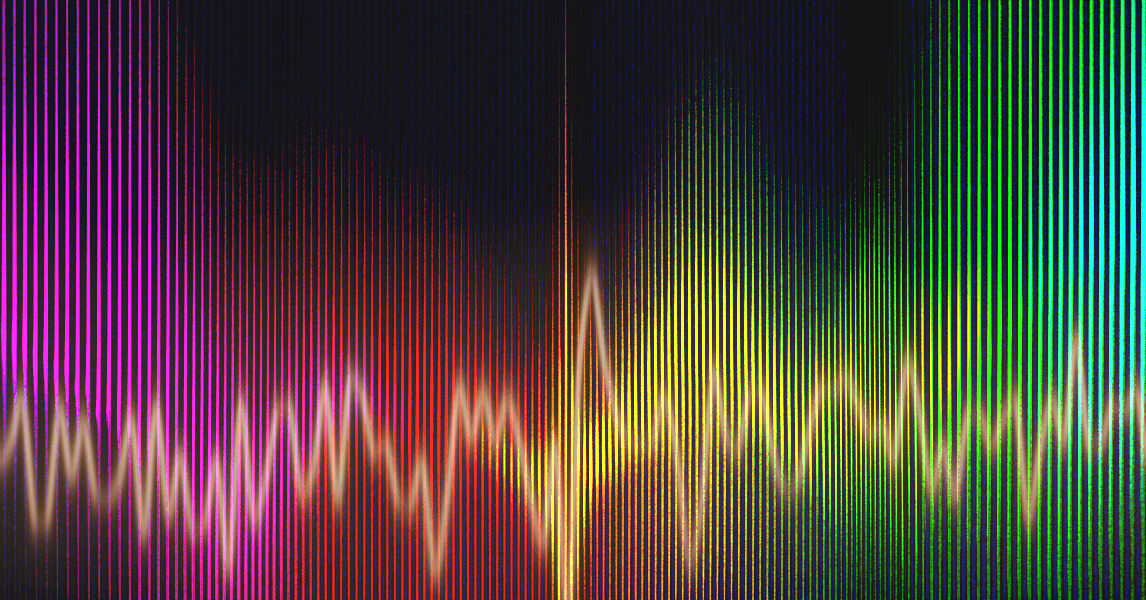As a certified sleep science coach and mattress tester of five years, I’m no stranger to soothing noises being part of many people’s sleep hygiene arsenal. For some, the perfect soundtrack might be white noise. For others, it could be a different color entirely—sometimes streamed on their phone, but often courtesy of a sound machine. If your sound machine or app offers a variety of different colored sounds, how might you know what they mean, or which might be best for your brain?
How Noise Is “Color-Coded”
Let’s get our Sheldon Cooper on for a minute and establish why certain noises are categorized into colors. Sound travels in waves, like light. The frequency of a sound wave, measured in hertz (Hz), is the number of waves that pass a certain point in one second. High-pitched sounds have high frequency (and short wavelengths), low-pitched sounds have low frequency (and longer wavelengths). The human ear can distinguish sounds from 20 Hz on the low end to 20,000 Hz on the high end.
As for the colors? In the portion of the light spectrum that we can see, different frequencies are perceived by our eyes as different colors. By analogy, the “color” of a sound is a shorthand way of describing the quality of that sound, which is determined by a particular blend of sound wave frequencies. (People with a rare condition called synesthesia literally do see colors from certain sounds, but that’s a different topic.)
Most people are familiar with “white noise” machines—in fact they’re pretty synonymous with sound machines. Just as white light is composed of all the visible colors, white noise incorporates all audible frequencies of sound at once. The result is similar to the ambient noise that is the sonic backdrop to your everyday life. Some liken it to TV static or a fan running—which happens to be the key mechanism in one of my favorite sound machines, the Snooz (see below).
Circling back to the 20,000 kilohertz that humans can hear—white noise is all of that, all at once. If you live in a louder environment, like a city or with roommates, white noise may be a helpful tool for you. It won’t “cancel out” sounds like horns honking, the way noise-canceling headphones do, but it can “mask” disruptive sounds. Essentially, the combined frequencies dull down the loud noises so that your brain doesn’t pick up on them as much.
Pink Noise
Some argue that pink noise is the best sound for sleeping. Like white noise, it contains all the frequencies we can hear, but it emphasizes the lower frequencies instead of putting all frequencies at the same loudness, as white noise does. This results in what some describe as a “flat noise” that is perceptibly softer. It’s often likened to rainfall or ocean waves Some studies have shown that it promotes deeper sleep and also calms brain activity so you fall asleep faster.
Brown Noise
Brown noise is “all about that bass.” Like pink noise, it boosts the amplitude (the oomph) of lower frequencies, so they’re more prominent—but even more so. The result is a deep rumbling sound. If you like to fall asleep listening to thunderstorms or like those intervals of a loud boom, so to speak, brown noise may be the color for you.
Green Noise
If you feel like “going green” with green noise, you’re not too far off from what you’d experience outdoors. Instead of putting all frequencies on play at once like white and pink noise, green noise puts an emphasis on 500 Hz, which is considered mid-frequency. If you’re in the mood to chase waterfalls in your dreams (hopefully you get the reference), green noise is most like the sound of water and wind. So listen to waterfalls, ocean waves, and wind rustling through the trees to your heart’s content.
Blue Noise
All noise types up until this point stay within the low- to mid-frequency range. But blue noise really amps up the dial and prioritizes high frequencies. Candidly, it may be more hit or miss depending on the sleeper. Some may find the sound (which some describe as steam whistling) better for working or staying alert.
Violet Noise
Violet noise ratchets up the high (treble) frequencies even more than blue noise. Basically it’s the opposite of brown noise. Everyone’s different, but I can’t imagine being lulled to sleep by this.
Pump Up the Beat
The use of sound to promote sleep and all the ways it can affect your brain and health are still being researched and explored. However, you can experiment with these different noise types whenever you like and see which you respond to (or rather, conk out to) the most.
